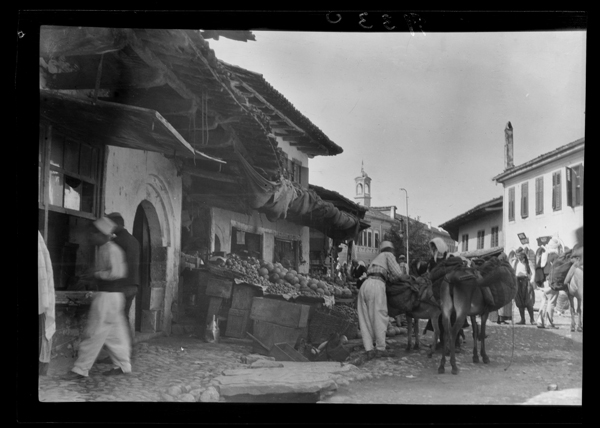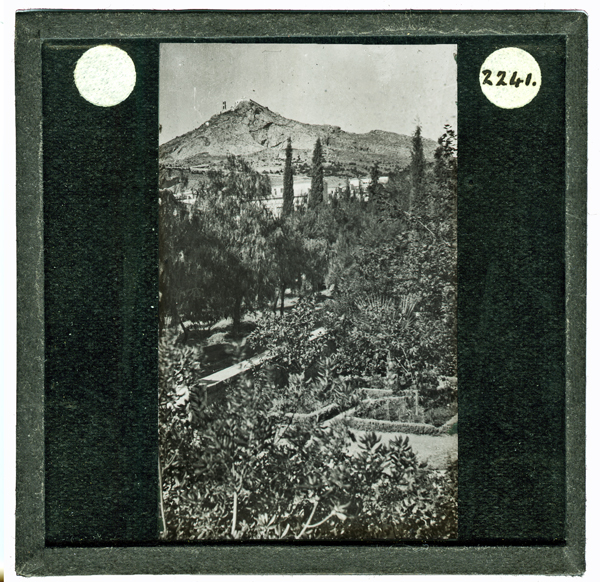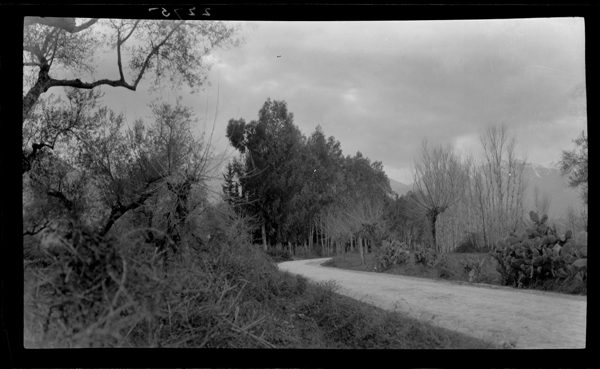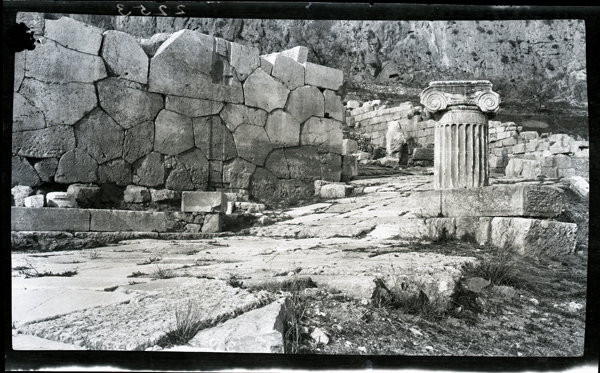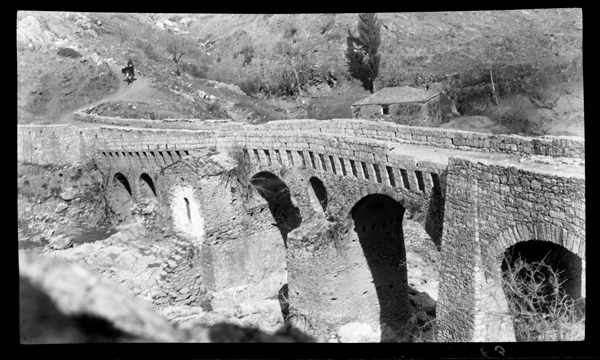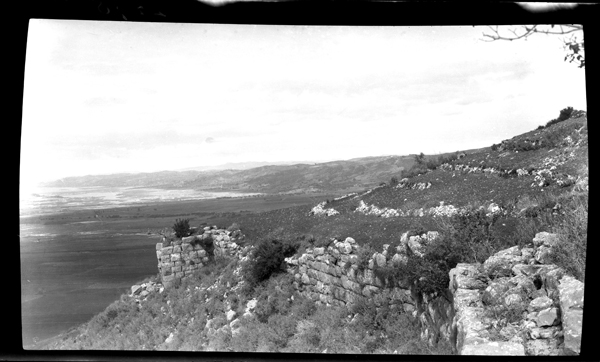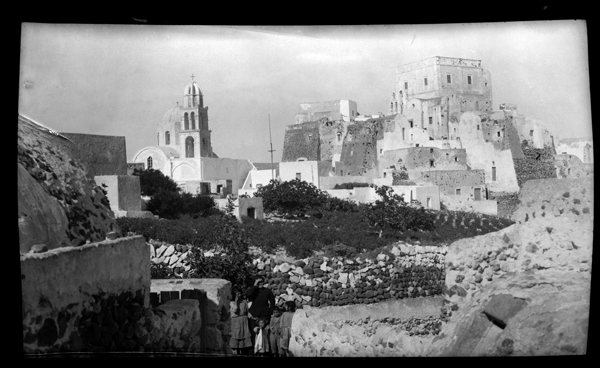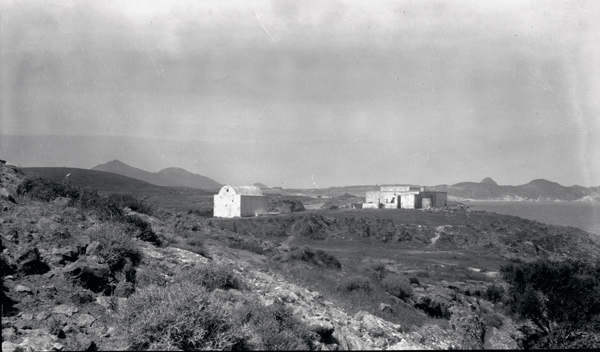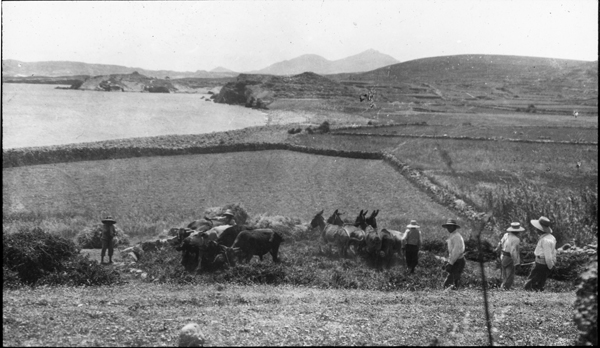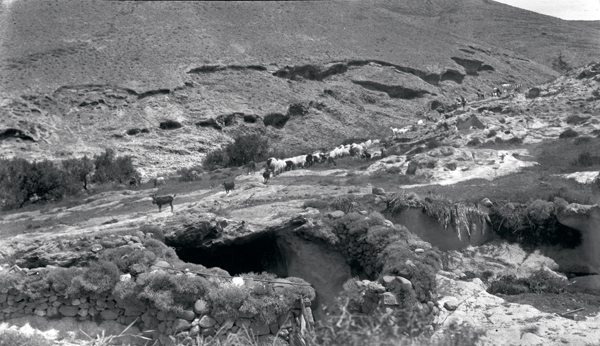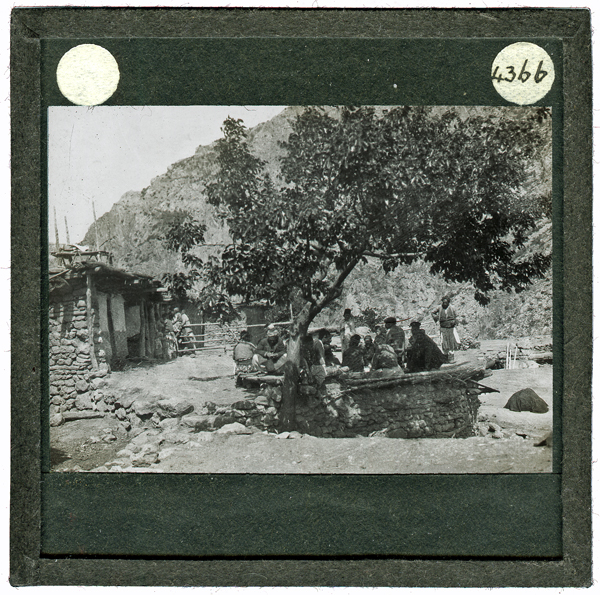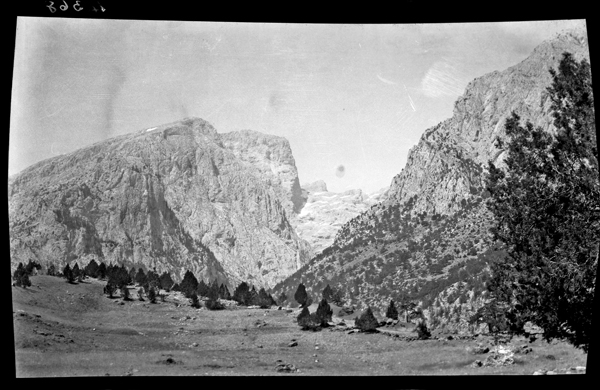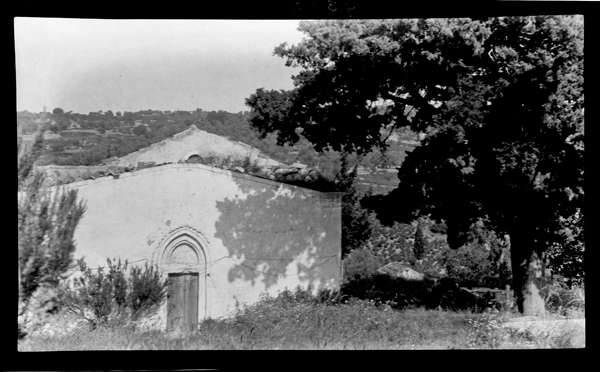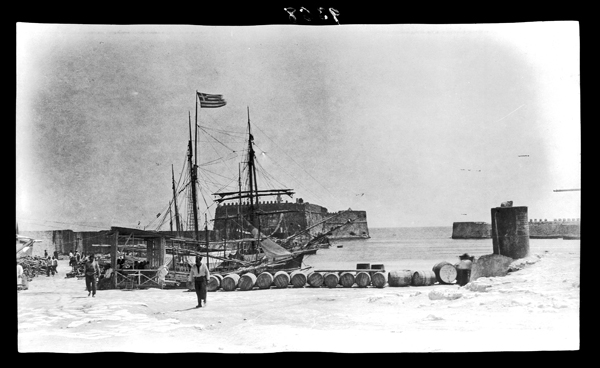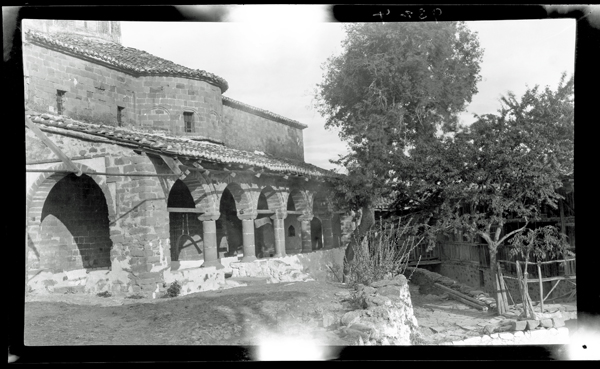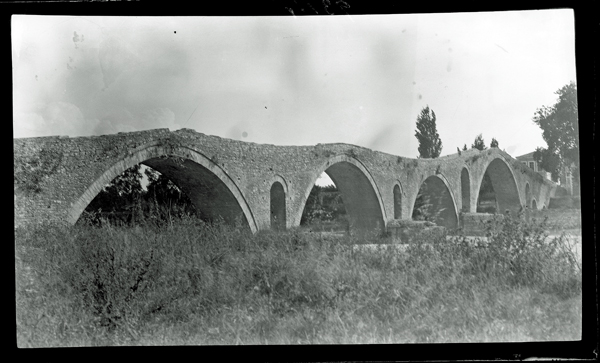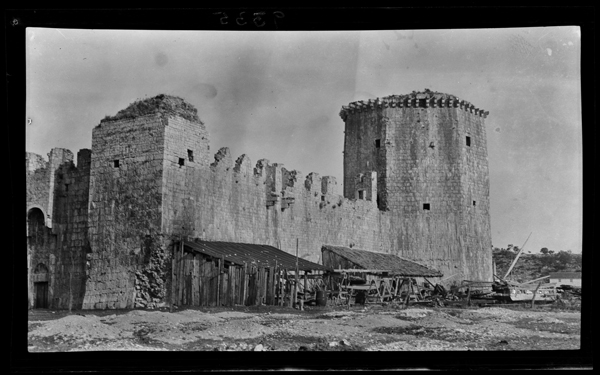Distances Travelled, Things Seen: W.R. Halliday’s Photographs in the BSA SPHS Image Collection
In the 1910/1911 Academic session at the British School at Athens (BSA), William Reginald Halliday arrived as the Craven Student from Oxford. The Annual report for that session recorded his activities: “He assisted throughout at the excavations at Phylakopi and spent the rest of his time in making extensive journeys in Asia Minor, including Cappadocia and Pontus, the Greek islands, Northern and Central Greece, the Peloponnesus and Attica“. This was the only session he was recorded as a student at the BSA, although he would later return to Greece in 1913 to participate in the BSA’s Kamares Cave Excavation (see Archive Story: Digging Crete). Halliday’s travel record was rivalled only by Arnold Toynbee who arrived for the 1911/1912 session and who was known to have travelled far and wide, often alone and on foot. Nonetheless, Halliday managed to cover more ground than Toynbee in roughly the same amount of time in addition to participating in on-going excavations.
Most of the 137 images associated with Halliday in the BSA SPHS Image Collection are associated with his time at the BSA. They are primarily in original film negative format with a few glass copy negatives and lantern slides. They cover a wide geographic distance and a diverse subject matter. Not quite half (60) were copied as slides and made available to the SPHS membership through their photographic library. There photographs – and slides – record ancient and medieval monuments, dramatic landscapes, and scenes from modern life. They cover many parts of Asia Minor, Crete, the Aegean Islands, mainland Greece and the Balkans. A few come from his home base at the BSA and easy excursions to nearby sites in Attica.
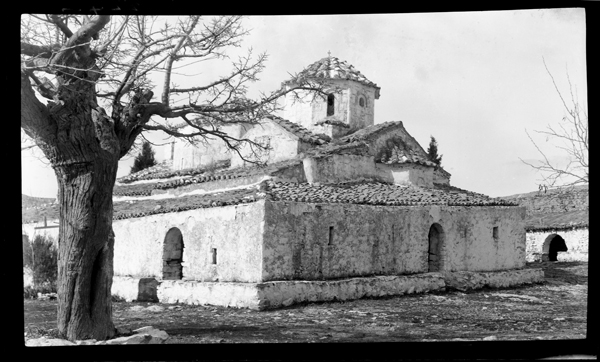
BSA SPHS 01/0655.2242. Byzantine Monastery of Saint John the Hunter (Agios Ioannis Kynigos) on Mount Hymettus.
Further afield, Halliday made journeys into various parts of Greece. In Attica, he photographed the walls of Eleutherae, Aegosthena, Palaiochora on Aegina. One photograph of the view between Sparta and Mystras might have been taken when he assisted Richard Dawkins at Sparta, studying material unearthed during the BSA 1906-1910 excavations. There are photographs of Delphi in Central Greece. In the Peloponnese there are photographs of Gortyna, Karytaina and Mount Lykaion, all in Arcadia. Western Greek sites included the fortress at Patras and the ancient site of Samiko. He also visited some islands, photographing places on Paros, Seriphos and Thera. It is unclear when he visited these sites, but likely in multiple journeys during the 1910/1911 academic year.
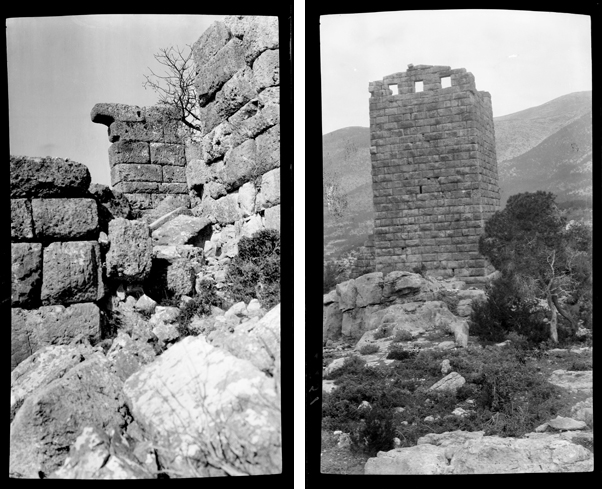
Left: BSA SPHS 01/0659.2247. Eleutherae: Gate. Right: BSA SPHS 01/0663.2251. Aegosthena: Southeast Tower.
Excavation at Phylakopi on the island of Melos began in the spring of 1911 and Halliday remained for the entire season. The BSA SPHS Image Collection holds 10 of Halliday’s photographs from his time on Melos. The other photographs in the BSA SPHS Image Collection from Phylakopi excavations that year consist of 57 images, mainly of ceramics, donated by the BSA. Notably, Halliday’s images are not of the excavation itself, but depict local activity around the site, natural features in the landscape and one of the BSA ‘dig house’ next to a church.
In July and August of 1911, Halliday joined Dawkins on his travels to Central Anatolia where he (since 1909) had been researching the dialects among the Greek speaking villages of the area (see Archive Story: Documenting Modern Greek Dialects). One of Halliday’s images shows Dawkins collecting folktales from the villagers. Dawkins’s interest in folktales, by his own admission, was sparked by another BSA scholar, Frederick W. Hasluck, but importantly, these oral stories tended to preserve a more conservative form of the dialect that was less susceptible to change. Halliday must have also shown an academic interest in folktales as Dawkins’ 1916 book, Modern Greek in Asia Minor contains a chapter by Halliday on the subject matter of the folktales. Most of Halliday’s photographs from this trip could be classed as ethnographic, recording activities of everyday life among the local inhabitants. There are also images of the stunning scenery of the Taurus mountains. Halliday produced an article in the journal Folklore that provided a descriptive and pictographic account of the customs surrounding a wedding in the Greek village of Axo in Cappadocia which he and Dawkins observed. Somewhat later, in 1921, he also produced a short article on the rock dwellings of Cappadocia in the popular magazine, Discovery which also included some of his photographs now in the BSA SPHS Image Collection.
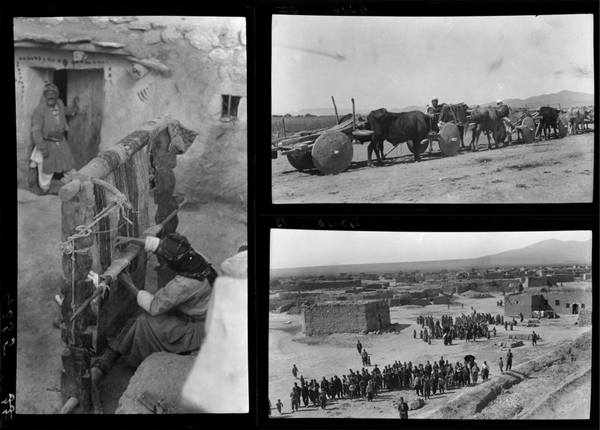
Left: BSA SPHS 01/4886.4355. Simple beam loom at Tschukuyurt (also known as Tusukuri; modern Çukuryurt). Right: Top. BSA SPHS 01/1725.4336. Possibly near Ürgüp: Bullock carts. Bottom. BSA SPHS 01/1728.4340. Axo (modern Hasaköy): Wedding procession
After the close of the major BSA excavations at Sparta 1906-1910, the BSA began preparing to acquire the firman (permit) from the Ottoman government to excavate to the east of the site of Cnidus on the promontory of Datcha (Greek Akanthos) where Dawkins had identified as the location of an archaic Greek sanctuary. Dawkins’ unpublished autobiography (held in Oxford University) describes a visit to Datcha in November 1911 to get local information in order to prepare for the application of the firman. According to the BSA’s Annual Report for the 1910/1911 season, it indicates that Dawkins was accompanied by Halliday and the unpublished autobiography details the trip from Symi to Datcha and their later visits to Rhodes, Smyrna, Ephesus, Kalymnos and Kos. It is possible to match this itinerary with some of Halliday’s photographs to this journey. Unfortunately, plans to excavate at Datcha had to be abandoned due to the outbreak of the First Balkan War in 1912.
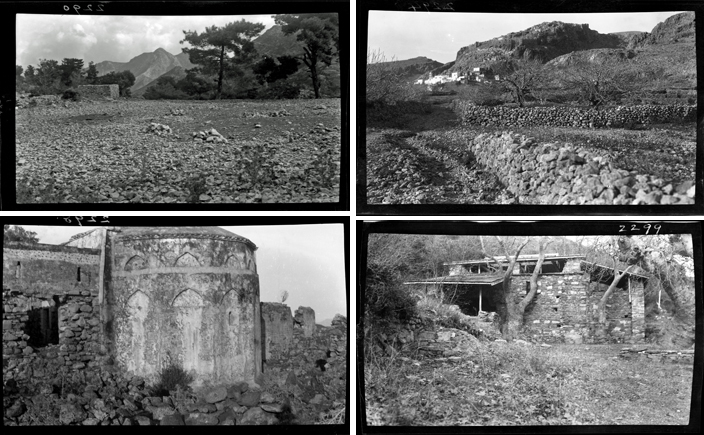
Top: Left: BSA SPHS 01/0706.2290. Cnidian Peninsula: View between Datça and Knidos. Right: BSA SPHS 01/0710.2294. Kalymnos: The Kastro
Bottom: Left: BSA SPHS 01/0714.2298. Kos: Apse of Chapel (Ayia Paraskevi) in the Castle of Antimachia. Right: BSA SPHS 01/0715.2299. Ephesus: Madonna Kapulu (House of the Virgin Mary)
The Annual Report for the 1912/1913 session mentions that Halliday, who was now Lecturer in Greek at the University of Glasgow, returned to Greece to participate in the Kamares Cave Excavation which was directed by Dawkins in the summer of 1913. After the excavation, Halliday took advantage of the opportunity to travel to parts of Crete recorded in 12 photographs in the SPHS collection. One photograph shows a church with rope binding around it, explained in his article in Folklore on this particular superstition. Binding churches, as Halliday explained, was a common practice in Greece “when a village is devastated by an epidemic, to vow a binding of the church or churches with wax candles. The thin wax candles are knotted together and tied round the church as in the photographs. For any serious epidemic spiritual help may be invoked in this way…”. Another photograph shows a ship at Heraklion (Candia) harbour bearing the Greek flag, a reminder that Crete had recently been incorporated into the Greek state. Although his time was short in Crete, Halliday’s travels may have served him well during WWI when he was stationed in Crete as an Intelligence Officer from 1916 to 1918.
After completing his travels on Crete, Halliday returned to the BSA, but almost immediately proceeded to Volos from where he visited “…the monasteries of Meteora, and, crossing Pindus by Metsovo, visited Jannina and Arta. He returned to England by way of Scutari, Cettinje, the towns on the coast of Dalmatia, and Trieste.” At the end of the First Balkan War, the Treaty of London was signed in May of 1913 that incorporated Epirus into the Greek State. Halliday must have travelled across the bridge at Arta, once the boundary between Greece and the territory of the Ottoman Empire, only months after this historic event.
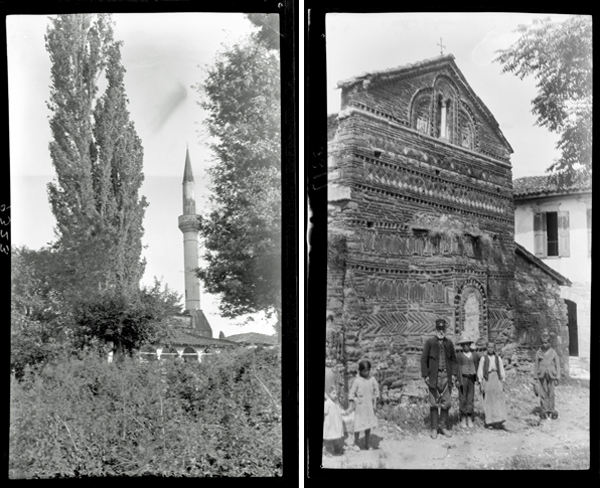
Left: BSA SPHS 01/4534.9323. Minaret of the Aslan Pasha mosque in Ioannina. Right: BSA SPHS 01/4531.9317. Church of Agios Vasilios in Arta, Epirus
In 1914 Halliday became the Rathbone Professor of Ancient History at the University of Liverpool, a position he held until 1928. However, his war service in Crete,1916-1918, intervened. In 1928, he was made Principal of King’s College London, Knighted in 1946, and retired in 1952. Halliday was noted for his work on Greek and Roman religion, but much of what he did spilled over into folklore and myth. In his book, Greek and Roman Folklore, Halliday looked at the impact and adaptation of ancient folklore and superstition into medieval and modern times. Halliday’s introductory remarks in the book demonstrated that he followed the concepts promoted by the pioneering scholar of Greek folklore (laographia), Nikolaos Politis (see Archive Story: Relics of the Past):
The study of folklore is concerned with survivals. It embraces the superstitions, festivals, customs, and amusements (games, songs, stories, riddles, and proverbs) … The sanction for the continued existence or practice of these is primarily that of tradition. The old favorite stories or recipes have been passed down from father to son or from mother to daughter; beyond the memory of the oldest inhabitant and, from what his grandfather told him, for time out of mind the village has observed such and such a custom upon a stated anniversary. The appear is to what the Romans called mos maiorum, the custom of the ancestors, the inherited experience of the race.
Much of Halliday’s interest in folklore may have been due to or at least encouraged by Dawkins. His interest in modern life in the places he visited is demonstrated, quite clearly, in many of his photographs. Halliday recorded contemporary activities – threshing, weaving, transport on land and sea, markets, ceremonies and evidence of superstitions. In the early part of the 20th century, one would expect a classical scholar and student of the BSA to observe ancient and medieval monuments. Halliday did exactly this, but it did not appear to be his primary interest. Even the photographs he took while on excavation tended to be about the everyday life around him – eg. the camp setting at the Kamares Cave and the local agricultural activity around Phylakopi. Indeed, the corpus of Halliday’s published material on the subjects – folklore, ancient religion, superstitions, and anthropology – reflected the same interests as his photographs.
Deborah Harlan
British School at Athens
Images from the BSA SPHS Image Collection are available on the BSA’s Digital Collections page.
Click here for more BSA Archive Stories.
Further Reading:
Dawkins, R.M. 1916. Modern Greek in Asia Minor. Cambridge: CUP.
Halliday, W.R. 1912. ‘A Greek Marriage in Cappadocia’, Folklore, 23(1): 81–88.
Halliday, W.R. 1913. ‘Cretan Folklore Notes’, Folklore, 24(3): 357–359.
Halliday, W.R. 1921. ‘Rock Dwellings in Cappadocia’, Discovery: A Monthly Popular Journal of Knowledge 11(18): 148–150.
Halliday, W.R. 1927. Greek and Roman Folklore. London: George G. Harrap & Co.
